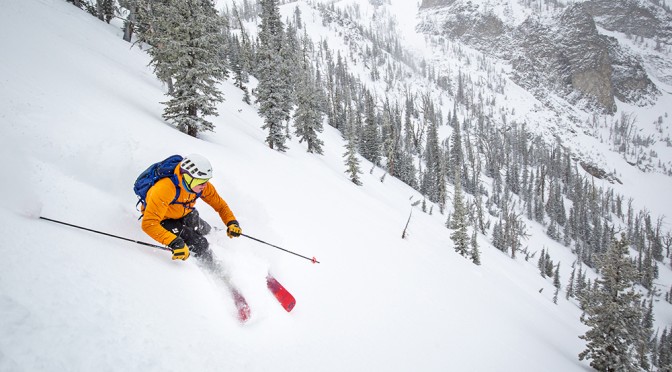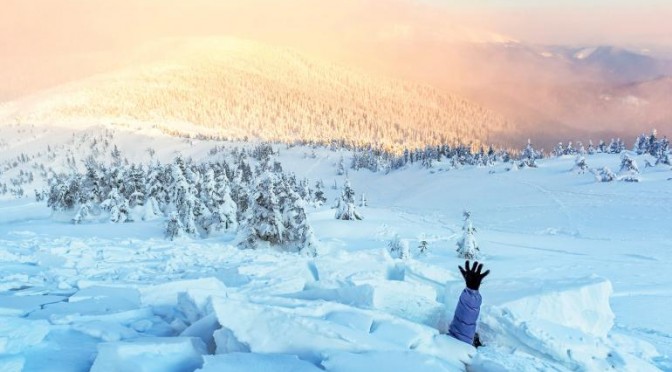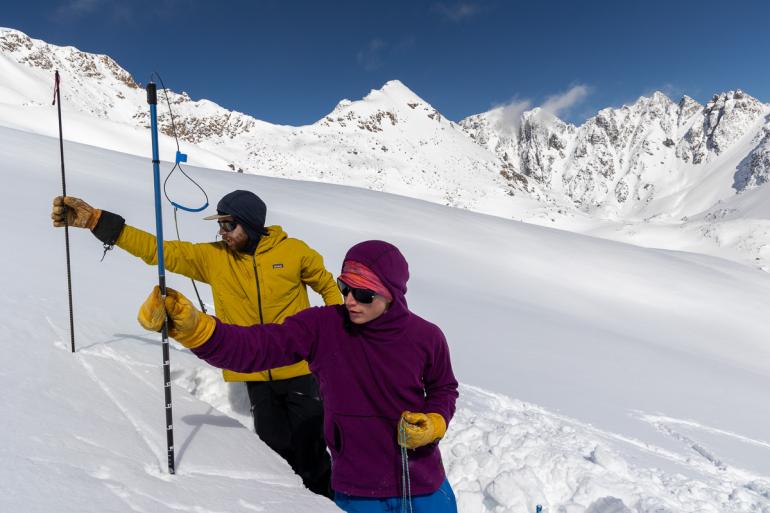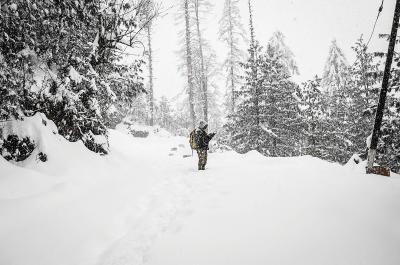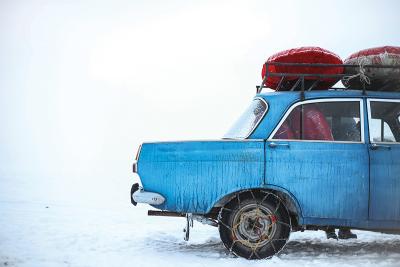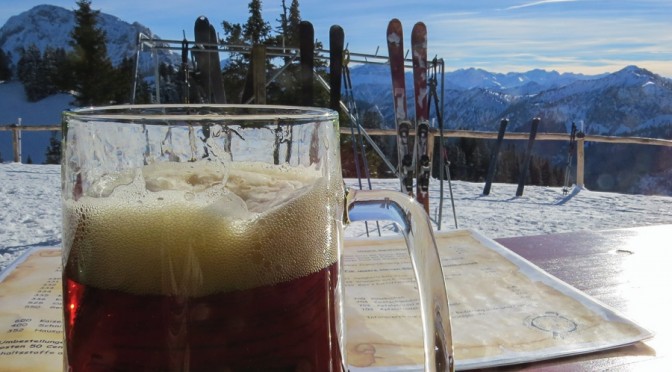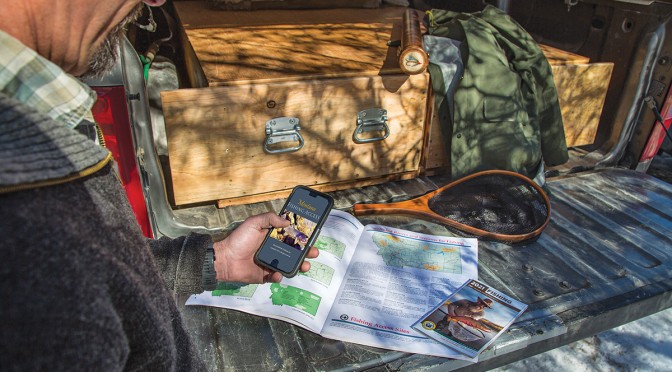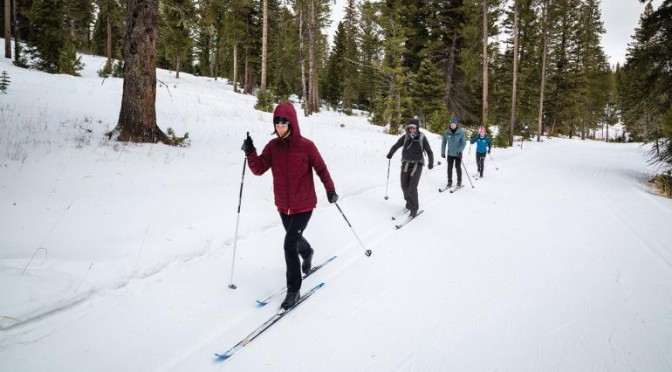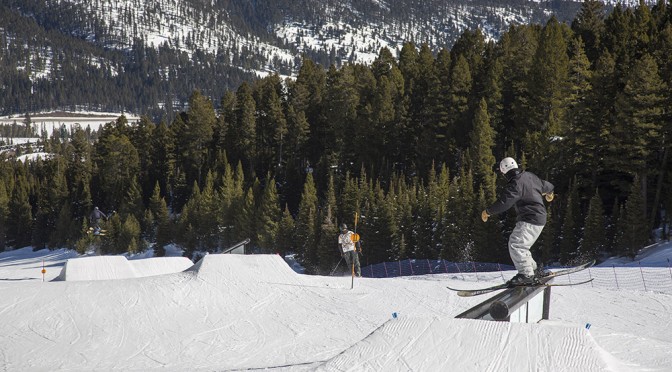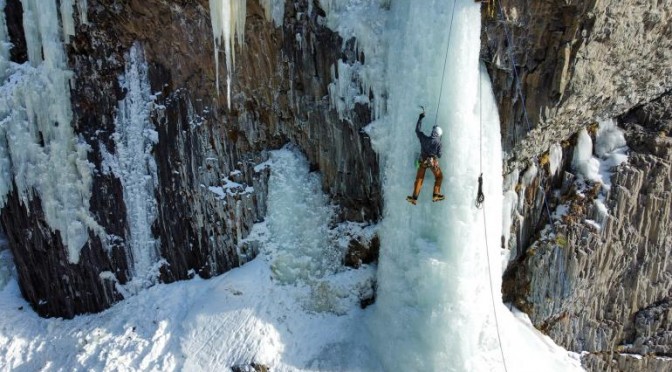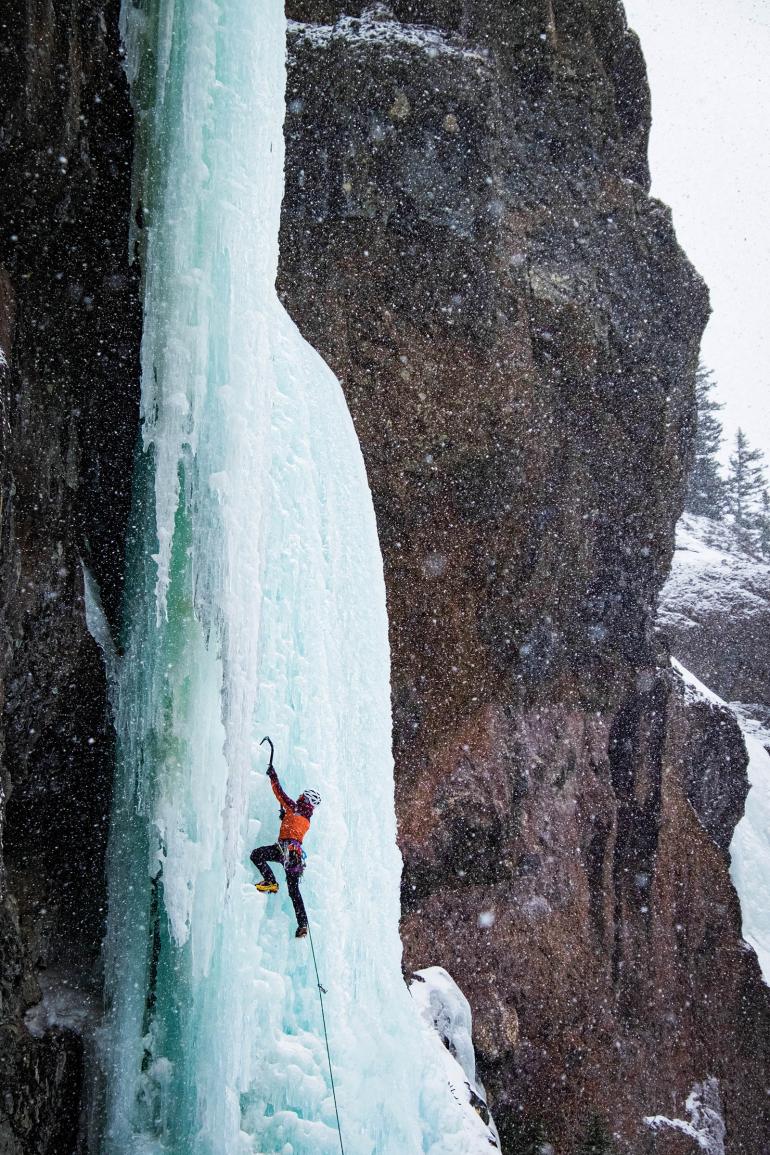by Adam Brown
Downhill skiing around Bozeman.
Winter in Bozeman is magical. Town turns into a winter wonderland adorned with lights and sparkling snow in every direction. And the most celebrated way to enjoy the season is on skis or a snowboard. Whether you’re looking to descend wild steeps, or just keep to the greens, there’s something here for you.
Where to Go
This corner of the Rockies is sprinkled with ski areas big and small, giving you a variety of options. To start, Bridger Bowl is Bozeman’s home mountain. It’s where most of us point our cars when the snow starts to fly. There’s plenty of mountain to go around, from the iconic Ridge to bunny hills and progression areas. It’s truly a fun spot for folks of all ability levels.
If you’ve got a lush bank account, splurge on skiing at Big Sky Resort. The terrain is epic, but ticket prices are cost-prohibitive for most folks.
But beyond Bridger and Big Sky, there are plenty more places to ski. These small-town ski areas offer a charming feel, low costs, and all-around good vibes.
Mountain Distance from Bozeman (miles) Nearest Town
Showdown 110 White Sulfur Springs, MT
Great Divide 120 Helena, MT
Discovery 130 Philipsburg, MT
Red Lodge 150 Red Lodge, MT
Maverick 160 Dillon, MT
Lost Trail 190 Sula, MT
Grand Targhee 190 Driggs, ID.
Backcountry
Once you’ve got your chairlift fix, it’s time to set off on some human-powered outings. There are backcountry ski options in every direction.
Hyalite Canyon is a gold mine of opportunity. Lick Creek and History Rock are great options to get your footing in the area. Once you have those in the bag, you’ll find plenty more to discover up there.
The Mount Ellis area is another popular close-by touring area. The gentle slopes of Little Ellis can be accessed via a short skin from a trailhead not 20 minutes from downtown Bozeman, while the Ellis Burn offers a longer descent that catches plenty of east-blowing snow.
For route descriptions and other inspiration, visit outsidebozeman.com/ski-tours.
Gearing Up
On paper, skiing and snowboarding gear is pretty simple. But when the metal meets the snow, things can get more complicated. It’s easy to get lost in the fine details like sidecut radius, effective edge, chamber height, blah-blah-blah. If you’re new to everything, no need to drive yourself crazy with all that. Just worry about length and waist width.
Aim for skis that are about the same height as you are. If you’re a beginner, go a bit shorter; advanced, go a bit longer. 100mm is a good, versatile waist width around these parts. Narrower is better for groomers; wider is better for powder.
Snowboards should be somewhere between your chin and nose in height, and your boot’s toes and heels should barely hang over the edge when centered on the board. If they hang too far, look for a “wide” model board.
Boots are the most crucial part for a positive experience on snow, but are oftentimes overlooked. Get something that fits snuggly, comfortably, and strikes the right balance between supportiveness and flexibility.
When it’s time to hit the backcountry, you’ll need a ski-touring setup. You’ll want boots with a walk mode, and lightweight AT bindings to make the uphill more enjoyable—after all, that’s where you’ll spend about 95% of your time. Snowboarders will need a splitboard with special bindings, but can typically use regular boots for this endeavor. Don’t forget poles for the way up, too. Finally, grab some skins and you’re just about there.
Avalanche safety gear is the last (but certainly not least) component. For baseline knowledge on snow safety, Staying Alive in Avalanche Terrain is the backcountry enthusiast’s bible. But if you’re going to be out in the backcountry often, take an avalanche-safety course. There are many organizations that offer field classes in the area, and our local avalanche center schedules free seminars throughout the season. Visit mtavalanche.com for a rundown. Lastly, pick up a beacon, probe, and shovel to round out your backcountry kit.
Etiquette
When out on the slopes, there are many official rules, and just as many unofficial ones. After all, everyone’s a critic. But at the end of the day, we’re all just trying to have fun at our own pace. We sometimes get ahead of ourselves or forget what we should be doing. Just try to be patient with people and help them out when you can. However, there are some important guidelines to ensure the safety of yourself and others on the mountain (a.k.a., the Responsibility Code). In fact, these duties are actually written into our state law, so it’s best everyone knows them well. Look ’em up online or review the posters at local ski areas.
When venturing out of the ski areas and into the backcountry, there is a different set of rules to follow, some more dire than others. To start, consider that most people head into the woods for solitude, so try to keep your volume to a minimum. Everyone has a right to experience the quietude of nature. Therefore, group size can be an issue—and is a matter of both impact and safety, because managing larger groups is difficult. Two to four people is a common sweet spot. Plus, it’ll put less strain on already limited parking areas. Furthermore, if another group has beaten you to a particular ski line, let them have it. It can be dangerous to pack too many people in a small area. Finally, skintracks are sacred, so don’t trash them with boot prints and postholes. Make sure to keep your pup’s waste off the track, too. And if you don’t like the pre-existing skintrack—or you’ve got a pack of dogs pockmarking a popular one—set your own, off to the side.
Events
Bozeman loves skiing. Here are some popular events to prove it.
November
Ski Swap – Bozeman. Out with the old, in with the new(ish). Don’t miss this one. Bridger Ski Foundation’s annual swap at the Gallatin County Fairgrounds offers huge discounts on quality gear. Drop your old gear off the day before. bridgerskifoundation.org
November
Opening Day – Big Sky. 36 lifts, 4,350 feet of elevation, and 5,800 acres to play on. Have at it—if you can afford to. bigskyresort.com
December
Projected Opening Day – Bridger Bowl. Weather permitting, chairs will start spinning for another season of winter fun at Bridger Bowl. Whether you’re first in line or last to leave, opening day is always a party. bridgerbowl.com
January
Community GS Racing – Bridger Bowl. See how you stack up against the rest of the local crowd in this series of two-run GS races. Categories for ski, snowboard, and telemark. bridgerbowl.com
February
King & Queen of the Ridge – Bridger Bowl. Think you have what it takes to hike the Ridge more times than anyone else? Give it your best shot at this annual fundraiser for the Avalanche Center. bridgerbowl.com
Editor’s note: dates are subject to change. For the most updated information, visit outsidebozeman.com/events.

